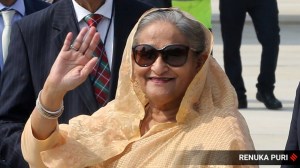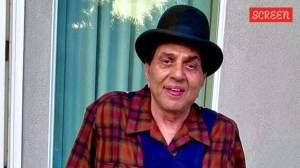PM Modi says Congress govts used Article 356 ’90 times’: a breakdown
The provision has been used by the Centre to assume control over states more than 100 times since the Constitution was adopted. The Article was mostly invoked under Congress governments at the Centre
 Prime Minister Narendra Modi replies to the Motion of Thanks on the President's address in the Rajya Sabha during Budget Session of Parliament. (PTI)
Prime Minister Narendra Modi replies to the Motion of Thanks on the President's address in the Rajya Sabha during Budget Session of Parliament. (PTI) Speaking in Parliament on Thursday, Prime Minister Narendra Modi accused the Congress of trampling on the rights of states and regional parties by dismissing elected governments on “90 occasions” by “misusing” Article 356 of the Constitution. “Who are the people?” he asked, and responded that Indira Gandhi alone had used the article “50 times” to dismiss governments.
Article 356 of the Constitution of India empowers the President to withdraw from the Union the executive and legislative powers of any state if he or she “is satisfied that a situation has arisen in which the government of the state cannot be carried on in accordance with the provisions of the Constitution”.
The provision has been used by the Centre to assume control over the states over 100 times since the Constitution was adopted.
In the 1960s and 70s, the Article served as a political weapon for the Indira Gandhi government after the Congress’s dominance in states declined and paved the way for the dominance of regional parties.
Jawaharlal Nehru used the Article six times until 1959, including to dislodge the first ever elected Communist government in Kerala in 1959. In the 1960s, it was used 11 times. After Indira came to power in 1966, Article 356 was used seven times in the two-year span between 1967 and 1969.
Between 1970 and 1974, President’s rule was imposed 19 times. Post emergency, the Janata Party government used it in 1977 to dismiss nine Congress state governments. When Indira returned to power in 1980, her government too imposed President’s rule in nine states.
Article 370 in numbers:
1977 (Nine times)
The Sarkaria Commission of 1983, which was formed to study inter-state relations, noted that after the 1977 general elections saw a landslide victory for the Janata Party, the Union Home Minister wrote to the Chief Ministers of nine Congress-ruled states — Bihar, Haryana, Himachal Pradesh, Karnataka, Madhya Pradesh, Orissa, Punjab, Rajasthan, Uttar Pradesh — saying that they should seek a fresh mandate. Some of them approached the Supreme Court to say the letter was unconstitutional, but were not successful. President’s Rule was imposed immediately after the Court’s verdict and the Assemblies were dissolved.
1980 (Nine times)
After the post-Emergency rout in 1977, Indira Gandhi came back to power in 1980. Soon after, the Assemblies of as many as nine states ruled by non-Congress (I) parties were dissolved – Uttar Pradesh, Bihar, Madhya Pradesh, Rajasthan, Punjab, Orissa, Gujarat, Maharashtra and Tamil Nadu. An Indian Express report from the time noted, “The decision to cut short the life of these Assemblies was taken at an urgent meeting of the Cabinet summoned by the prime minister at South Block in New Delhi.”
4 years 8 months
In the 1980 Punjab elections, the Congress returned to power, with Darbara Singh as CM. But by then, Punjab had slipped into a spiral of violence due to militancy. As the violence spread across Punjab, the Centre imposed President’s Rule in October 1983.
The on-off talks between the Centre and Akalis made little headway, and eventually led to Operation Blue Sstar in June 1984, followed by the revenge assassination of Indira by her bodyguards, and the anti-Sikh violence in October that year.
The 1985 elections were held in the backdrop of the Rajiv-Longowal accord, and the Akali Dal led by Surjit Singh Barnala took over the state. But the violence continued and killings escalated. Barnala was subsequently removed and President’s Rule imposed in the summer of 1987 and went on till 1992 – the longest spell ever.
10 times
Manipur has seen President’s rule the highest number of times. The first was in 1967, when it was a Union territory. The politics in the state was then beset by volatility, defections and instability, which led to several spells of President’s rule in the state till the 1990s. The last one was in 2001, when the incumbent government lost its majority.
Once
President’s Rule was enforced in Delhi, with the Assembly kept in suspended animation from February 14, 2014, to February 11, 2015, when Arvind Kejriwal resigned as the chief minister after his move to introduce the Jan Lokpal Bill fell through in the Assembly.
More recently, Arunachal Pradesh came under President’s Rule from December 16, 2015, to February 19, 2016, after Congress MLAs approached Governor J P Rajkhowa seeking to impeach Speaker Nabam Rebia. The Governor agreed and called for an emergency session to take up the impeachment motion. The Congress protested the Governor’s action, but the Centre went ahead and invoked Article 356.
In June 2018, the Mehbooba Mufti-led coalition government collapsed in Jammu and Kashmir. After six months of Governor’s rule, in December, then President Ram Nath Kovind imposed President’s rule in the state (under J&K constitution, there was no provision for further extension of Governor’s rule). Article 370 was abrogated the following August, revoking the special status of the state, and splitting it into two Union territories.





- 01
- 02
- 03
- 04
- 05


























